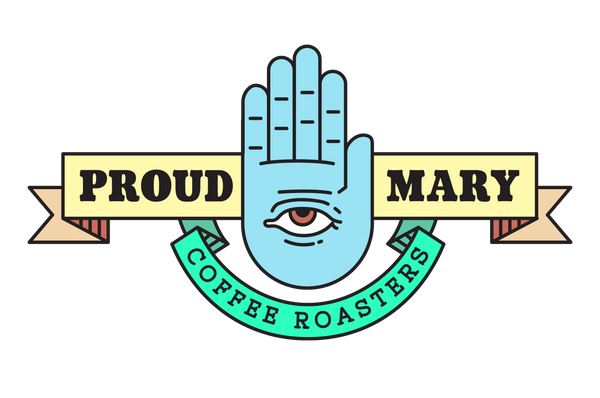Anaerobic Process, CM Process, ASD Process, Dynamic Process.
Yes, coffee processing is having a real moment right now and we've been working hard for years to support our innovative farmers produce mind-blowing coffees. All for the pursuit of flavour. Here's our FYI on some of these processing methods and why they produce such interesting and unique flavours in our brewed cup!
WHY SO HOT RIGHT NOW?
Let's be honest, fermentation and flavour is very HOT right now. Kombucha, sourdough, natural wine, and the hip chefs of the world are bringing it front of mind. A lot of our favourite things we consume go through fermentation. Coffee is no different. Coffee producers are challenging and breaking the traditional moulds of coffee processing (fermentation), and exciting us with unique flavours never tasted before!
COFFEE FERMENTATION
To keep it simple, all coffee (washed, honey, natural, anaerobic etc.) goes through stages of fermentation. Fermentation of coffee occurs when the wild bacteria and/ or yeast (living on coffee cherries, leaves, even the air) starts to consume the natural sugars found in the coffee. As these microbes digest the sugars lots of chemical changes occur (simple version) which impacts flavour. CO2 is also produced as a by-product of fermentation/microbe sugar digestion. Fermentation stops when the coffee beans reached around 11% moisture content, which occurs through the drying process. If the farmer wants a longer fermentation they can keep moisture content higher for longer and the opposite for normal or shorter coffee fermentations.
COMMON INNOVATIVE PROCESSING METHODS EXPLAINED
Anaerobic Processed: No-oxygen environment
Perhaps the most popular non-traditional coffee processing method at the moment. Usually, this method refers to fermentation that occurs in a "sealed" environment rather than a 100% no oxygen environment. Only particular bacteria can survive/are active in an anaerobic environment which makes this technique so unique.
Coffee cherries (whole cherry or pulped) are fermented in a sealed environment (bags, containers, drums) which eliminates oxygen from entering during fermentation. Fermentation in this environment is usually based on length e.g 60hr, 180hr, 240hr anaerobic ferment. The ferments normally happen in water which allow the farmer to measure the pH and Brix (sugar content). Who said they're all cowboy ferments?!
After fermentation coffees can be dried and processed as washed, honey, or natural.
Anaerobic Slow Dried (ASD) / Supernatural: Long, slow dying process
Championed by the famous Elida Estate farm in Panama. The ASD process is focused on a slow and extended drying of the coffee. This method allows coffee to reach desired moisture % at around 60 days of drying, compared to the usual 30-40 days.
After fermentation coffees can be dried and processed as washed, honey, or natural.
Here's a video of Wilford Lamastus (coffee legend) of Elida Estate explaining their method.
Carbonic Maceration (CM): Carbon Dioxide (CO2) rich environment
Similar to anaerobic fermentation, CM process also ferments without oxygen. While anaerobic fermentation tolerates some initial oxygen in the ferment, CM process usually involves flooding the fermentation vessel with CO2 to eliminate all oxygen before fermentation begins. The word maceration is also used instead of fermentation as it's a more inclusive term used for microbian metabolism.
After fermentation coffees can be dried and processed as washed, honey, or natural.
Dynamic Process: Isolation of wild/native yeast fermentation
Coffee fermentation usually occurs with spontaneous fermentation. This means that fermentation naturally occurs due to the wild yeast found on coffee cherries / in the air. No packet yeast / bacteria etc.
Championed by coffee processing master and biologist Felipe Ospina (Colombia), Dynamic Process involves a few complex steps:
-
Getting a sample of the native/wild bacteria and yeast located on the farm
-
Isolate the desired bacteria and yeast within in sample (only a biologist knows this crazy stuff)
-
Grow that bacteria / yeast population out
Once Felipe does this he then inoculates the coffee ferment with this "super" bacteria / yeast family and the ferment begins!
This is an exciting and somewhat secret process that we're excited to share with you all. As this is a naturally grown sample of native organisms from the very farm the coffee comes from, this is vastly different (and superior) to packet yeast or other inoculated coffee ferments.
After fermentation coffees can be dried and processed as washed, honey, or natural.
COMMON FLAVOURS AND TEXTURES
These innovate processing methods unlock flavours like we've never experienced before in coffee.
Fruits: Passionfruit, watermelon, sour cherry, grilled pineapple, orange, blood orange, raspberry, strawberry
Florals: Sweet florals, hibiscus, earl grey tea, chai, lavender
Other: Cinnamon, macadamia, orange wine, cocoa nibs
Textures: Creamy (lactic), silky, jammy, syrupy










